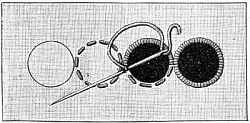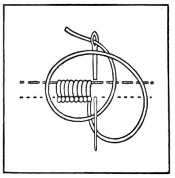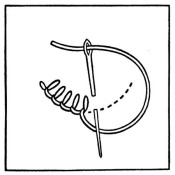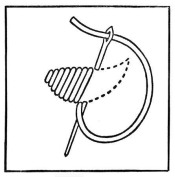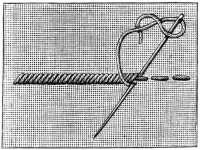Learn the art of embroidery.
Fine ladies of the realm could often be found stitching away at an embroidery. As ladies were extremely limited in what society permitted them to do, embroidery was something that proved to be both a practical and a dainty way for them to spend their time.
Embroidery stitches can be used to embellish clothing, pillows, quilts and just about anything in the fiber arts. Mixed media artist even sew on cardstock. There are thousands of named stitches but for now, we’ll just explore some of the more commonly used ones. We’ll also be including some vintage embroidery and cross stitch patterns that you can use freely in your own projects.
In our article on how to sew the buttonhole stitch, we talked about created connections between open areas of cut-work with buttonhole connectors. This entry discusses two techniques for creating openwork using the buttonhole and overcast stitches.
The buttonhole stitch is used for both buttons and some of the finest ornamental cut work embroidery designs. It is both ornamental and functional, making it a must have stitch in any embroiderer's arsenal. Learn how to make this important stitch and see examples of Venetian, Renaissance, Richelieu and Madeira embroidery.
The blanket stitch is quite easy to construct and is often sewn on the edge of a blanket or other fabric to help prevent unraveling. Learn how to sew two variations of this stitch to create lovely edges on your fabric or within your embroidery design.
Learn how to sew the satin and encroaching satin embroidery stitches. Examples also discuss different applications of the satin stitch to create color gradations.
Learn three variations of the stem stitch used in vintage and modern embroidery. There's also a demonstration on how making slight variations in the stitch can make for a more effective result.
